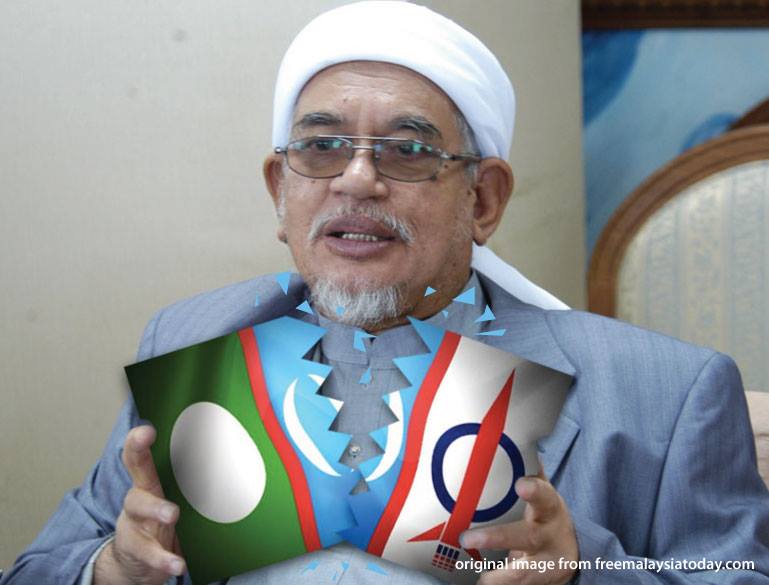Tun M is changing our public transport in BIG ways. How’s it compare to Najib’s plan?
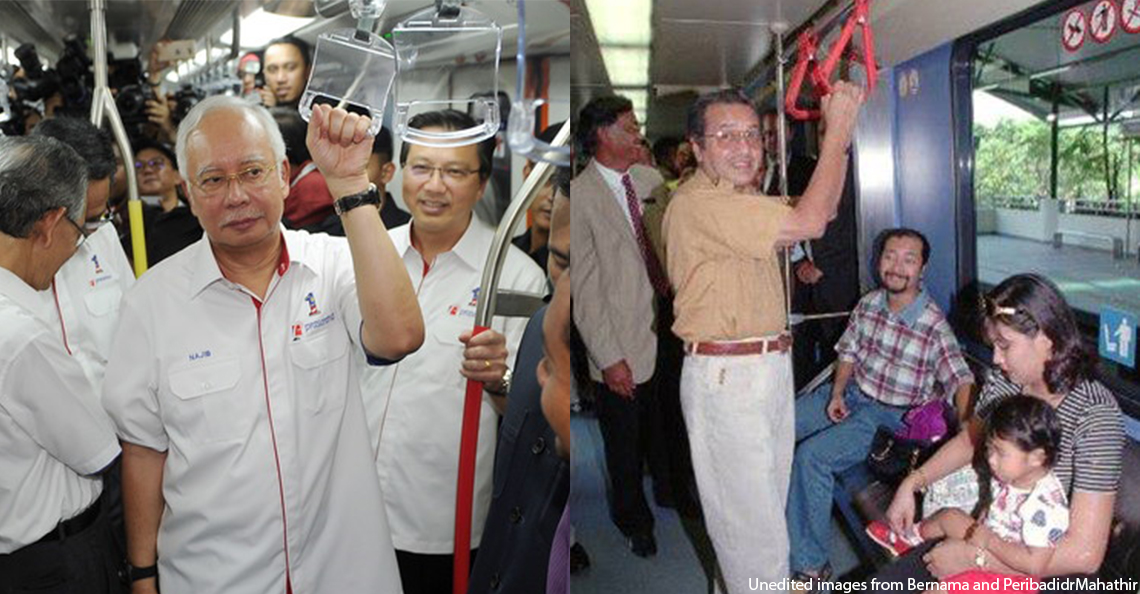
- 828Shares
- Facebook748
- Twitter4
- LinkedIn18
- Email25
- WhatsApp33
Have you ever had to go somewhere new to you and as you’re afraid of getting lost, decided to hail a Grab to go there? And then you see that the Grab’s price is kinda high, so instead you look up public transportation on how to get there. And then you see it involves 3 bus rides, a trip on the LRT, a KTM stop followed by a 15 minute walk. And then even as you tell yourself the walk is good exercise, you get to the bus station only to find… no buses.
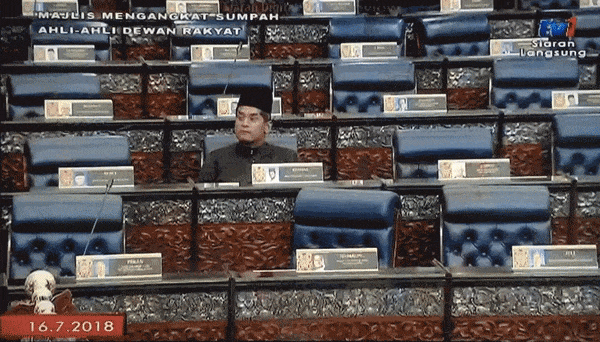
Yes, public transportation may sometimes be really frustrating for some of us, but to give credit where credit is due, our former Prime Minister Najib definitely did quite a lot when it comes to improving public transportation in Malaysia. There’s even been calls to make Najib the ‘Father of Public Transportation’. However, since the change in government, a number of Najib’s public transportation plans have come under review, and some have been revamped while others put on hold.
With so many plans in the first place and with changes happening to them faster than you can say ‘mass rapid transit’, we here at Cilisos thought that it would be a good time to look at these plans and the new updated versions of them by the new government.
Up first…
No more big big MRT and LRT projects
If the Klang Valley Integrated Transit System doesn’t ring a bell… maybe this image will:
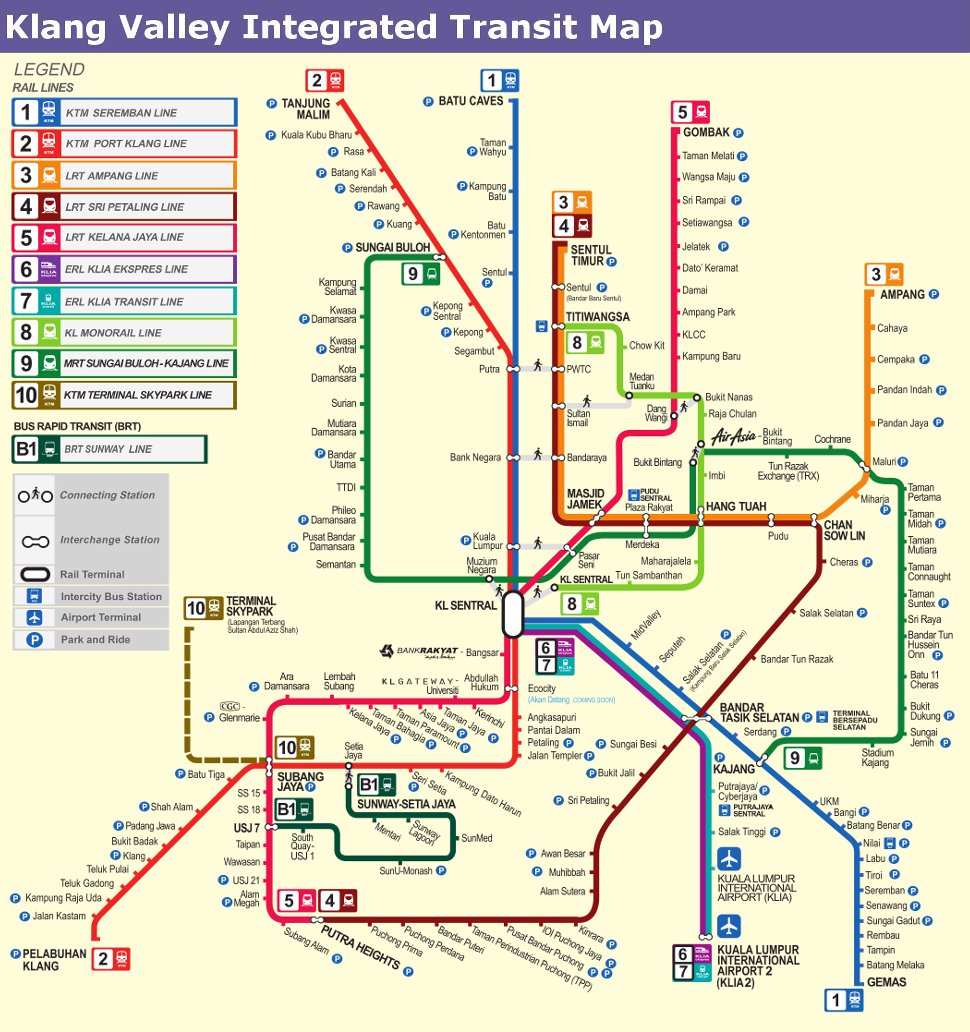
NAJIB’S PLANS: Expand everything!
Prior to GE14, Najib and co actually did quite a lot when it came to the Klang Valley Integrated Transit System. For a start, the both LRT lines received extensions, making them connected to many new areas. We also got the MRT line as well as the BRT line in Sunway. Frequent flyers weren’t forgotten either, with the Skypark Link connecting KL Sentral to the Subang Airport recently opened.
Najib wasn’t done with just that tho. His government saw a bunch of plans for more public transportation infrastructure whipped up, such as the LRT3 and MRT2 transit lines that are currently under construction. There’s also the MRT3 Circle Line that was brought up as a way to connect all current and under construction transit lines. Putrajaya would also be getting a tram system that hooks it up to the MRT1 and MRT2 lines had Najib and co continued to be in government. These plans weren’t without criticism tho, as some people did worry over the high costs of construction.

MAHATHIR’S PLANS: Downsize everything!
However, Pakatan Harapan ended up winning GE14. With Mahathir at the helm, we saw a lot of revamps to the plans Najib had drawn up for the Klang Valley Integrated Transit System.
For starters, the LRT3 project has been massively downsized for financial reasons. It will now have 5 stations less and have 22 sets of three-car trains instead of 42 six-car trains. LRT3’s expected launch in 2020 has also been pushed back to 2024. This downsizing saves the government RM15 billion in costs, altho not everyone is happy with it, with some worrying the new LRT3 neglects long-term expansion plans for a short-term financial gain. The Ministry of Transport did try to address some of the worries, which you can read in full by clicking here.

On top of that, the MRT3 Circle Line has been scrapped altogether. The MRT2 has also been subjected to cost-cutting measures, altho what will be cut has yet to be announced. We haven’t heard much about the Putrajaya tram system just yet tho.
The Klang Valley Integrated Transit System isn’t the only public transport system being revamped by the new government tho…
High speed rail? More like ‘bye, speed rail’…
NAJIB’S PLANS: Reach Singapore before your movie ends
The KL-Singapore High Speed Rail (HSR) is one of Najib’s most significant and controversial mega projects during his time as PM. The then government struck a deal with Singapore back in 2016, and by 2017 the land for the HSR had been bought already. Construction would begin by this year, and if everything goes according to Najib’s plans, we could be going to Singapore from KL in just an hour and a half. The estimated cost for this mega project isn’t cheap tho, with costs estimated to be above RM100 billion.
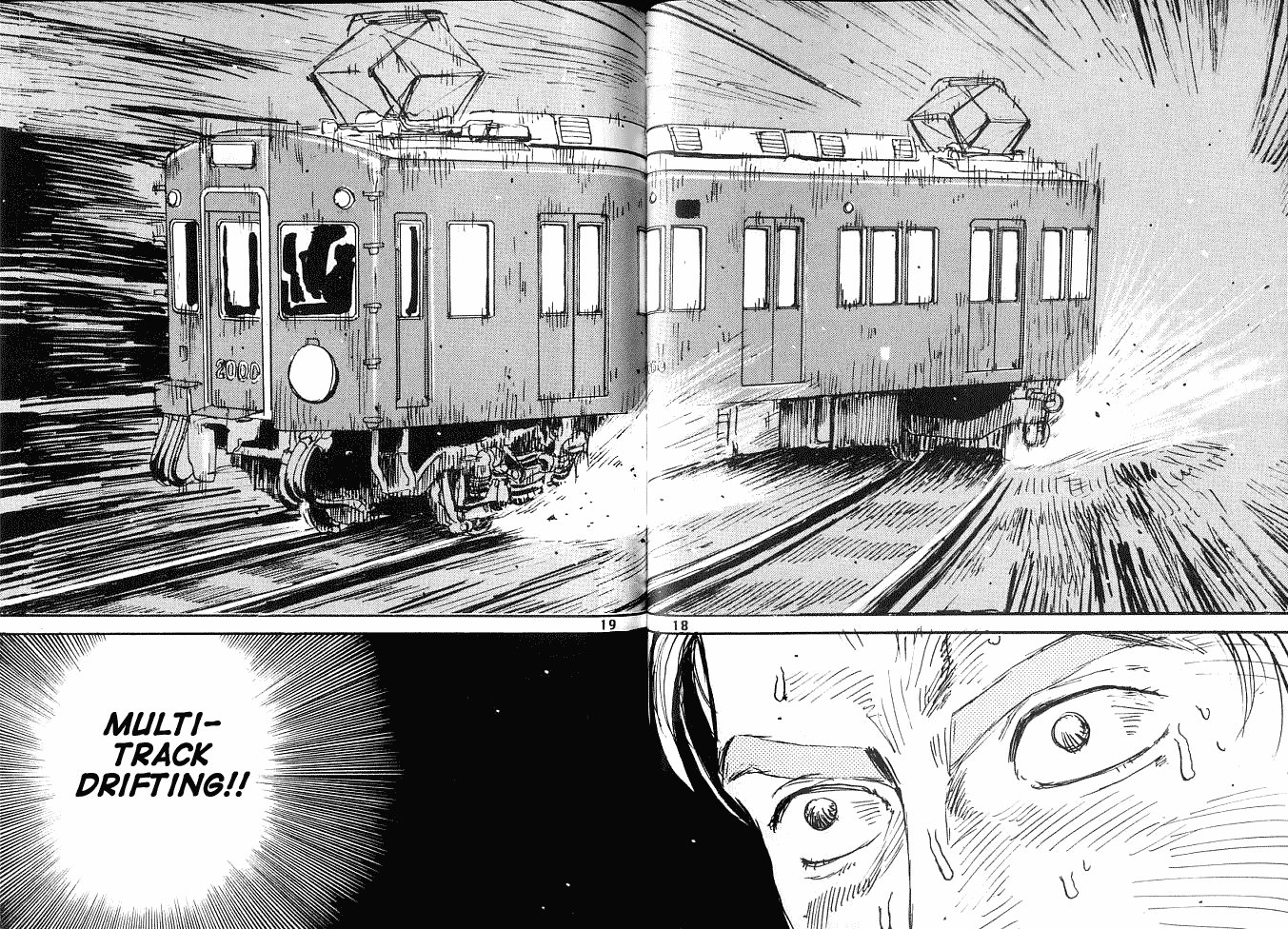
On top of that, there’s also the East Coast Rail Link (ECRL) project that would’ve linked the East Coast of Peninsular Malaysia to Klang Valley. Construction began back in August of last year, and the RM81 billion project was set to be completed in two phases. This long train would’ve taken a long time to build tho, and was set to be completed by 2024.
MAHATHIR’S PLANS: No train! …Okay fine, yes train, but make it cheap.
But, with the new government in charge post-GE14, we found out that the nation’s coffers are in a kinda bad state, and that these megaprojects could be bleeding us dry. The HSR’s current future remains in a limbo due to the high government debt, as initial plans to cancel it has been um, cancelled, and instead Mahathir hopes to postpone it. It probably had something to do with Singapore demanding quite a lot in compensation had the HSR been cancelled.
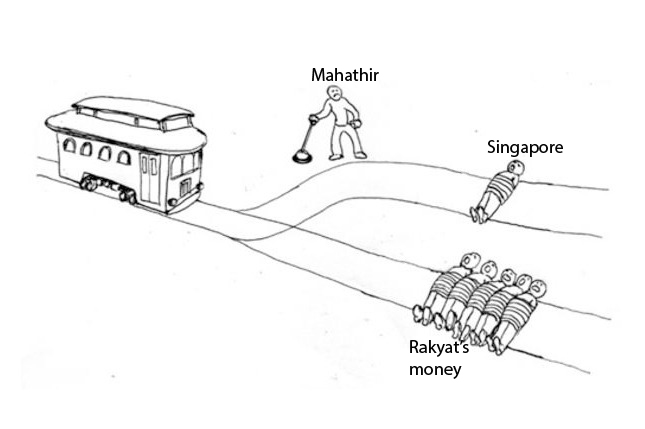
Finance Minister Lim Guan Eng is still kinda hopeful for the project to continue, and is calling for proposals to help lower the RM110 billion cost of the HSR. The Minister of Economic Affairs Azmin Ali meanwhile is set to meet Singapore by this month to discuss the fate of the HSR, so perhaps then we’ll know the final decision.
As for the ECRL, it’s a familiar story all round, as Mahathir is ultimately ‘fine’ with the project going on, but is hoping to cut the cost of it before continuing work on it. As for now, the ECRL project has been suspended. The government is looking to renegotiate the deal the previous guys had with China before continuing with the rail project.

Besides intercity trains and the Klang Valley Integrated Transit System, us carless people also do regularly take another kind of transport – e-hailing rides and taxis.
Surprisingly, both govts’ aren’t that different regarding taxis and e-hailing
NAJIB’S PLANS: Regulate the e-hailing companies like taxis!
Just before the election, Najib actually had some big plans for the taxi and e-hailing industry. One of these major plans was the 1Malaysia Taxi Aid Card programme. This card came with RM800 in it for fuel purchases at Petronas stations while taxi drivers who are also cardholders would also get a special accident insurance coverage. On top of that, Najib’s government was also waiving the need for taxi drivers to go thru the application process for BR1M, instead giving taxi drivers automatic approval for the welfare programme.

As for e-hailing rides, the previous government actually amended the Land Public Transport Bill 2017 just a month before the general election that made drivers for e-hailing companies such as Grab be subjected to the same regulations that taxi drivers have to follow. These include background checks, health checks, and regular vehicle inspection.
MAHATHIR’S PLANS: Regulate the e-hailing companies like ta- oh wait same.
Well believe it or not, the new government’s plans are actually quite similar when it comes to dealing with taxis and e-hailing rides. The biggest change they’ve made is, um, regulating and treating e-hailing rides similarly with taxis. Sound familiar right? The new government’s new changes for the industry include:
- e-hailing companies needing a license from the Companies Commission of Malaysia (SSM) or Malaysia Co-operative Societies Commission (SKM) and registering with the Land Public Transport Commission (SPAD)
- e-hailing drivers must have a vehicle that got at least a 3-star ASEAN NCAP rating or similar
- vehicles 3 years or older must be checked by Puspakom at least yearly
- insurance coverage for the driver, passenger, car and third-party is a must
- drivers need to take a 6-hour course costing RM200 before they be a e-hailing driver
- e-hailing companies can only surge the pricing up to two times the fare
- users of e-hailing services will need to upload a pic of their IC or passport to protect the e-hailing driver

Phew, that’s a loooootta changes. But that ain’t all tho. As for taxis, the new guy in charge Anthony Loke has said that taxi drivers who also drive for e-hailing companies are only subjected to 10% commission, compared to a max of 20% for normal e-hailing drivers using their own set of wheels. The government would also be giving taxi drivers a grant if they want to switch over to e-hailing companies.
Mahathir isn’t ripping plans up for nothing tho
The national debt is currently 65 percent of GDP, slightly higher than what it should be. As such, since taking over Putrajaya, the new government has been imposing quite a lot of cost cutting measures which includes reviewing these mega projects from Najib’s time at the helm. This attempt to raise revenue and lower spending includes the infamous Tabung Harapan too.

Of course, that doesn’t necessarily mean public transport infrastructure is a bad thing. Indeed, there have been quite a number of people writing in to news sites complaining that public transportation plans from the previous government, especially the Klang Valley Integrated Transit System, should not be downsized or cancelled as it serves the rakyat. There’s also been quite the buzz surrounding Mahathir’s cost cutting of these public transportation plans while also attempting to start up a new national car project.
In the end of course, we should acknowledge that there will always be two sides to a topic and public transportation remains no different. It would only be fair if we continue to check and balance the new government’s policies – especially regarding public transport infrastructure – to ensure their actions are held accountable but at the same time allow them just enough breathing space to do their job well.
- 828Shares
- Facebook748
- Twitter4
- LinkedIn18
- Email25
- WhatsApp33



